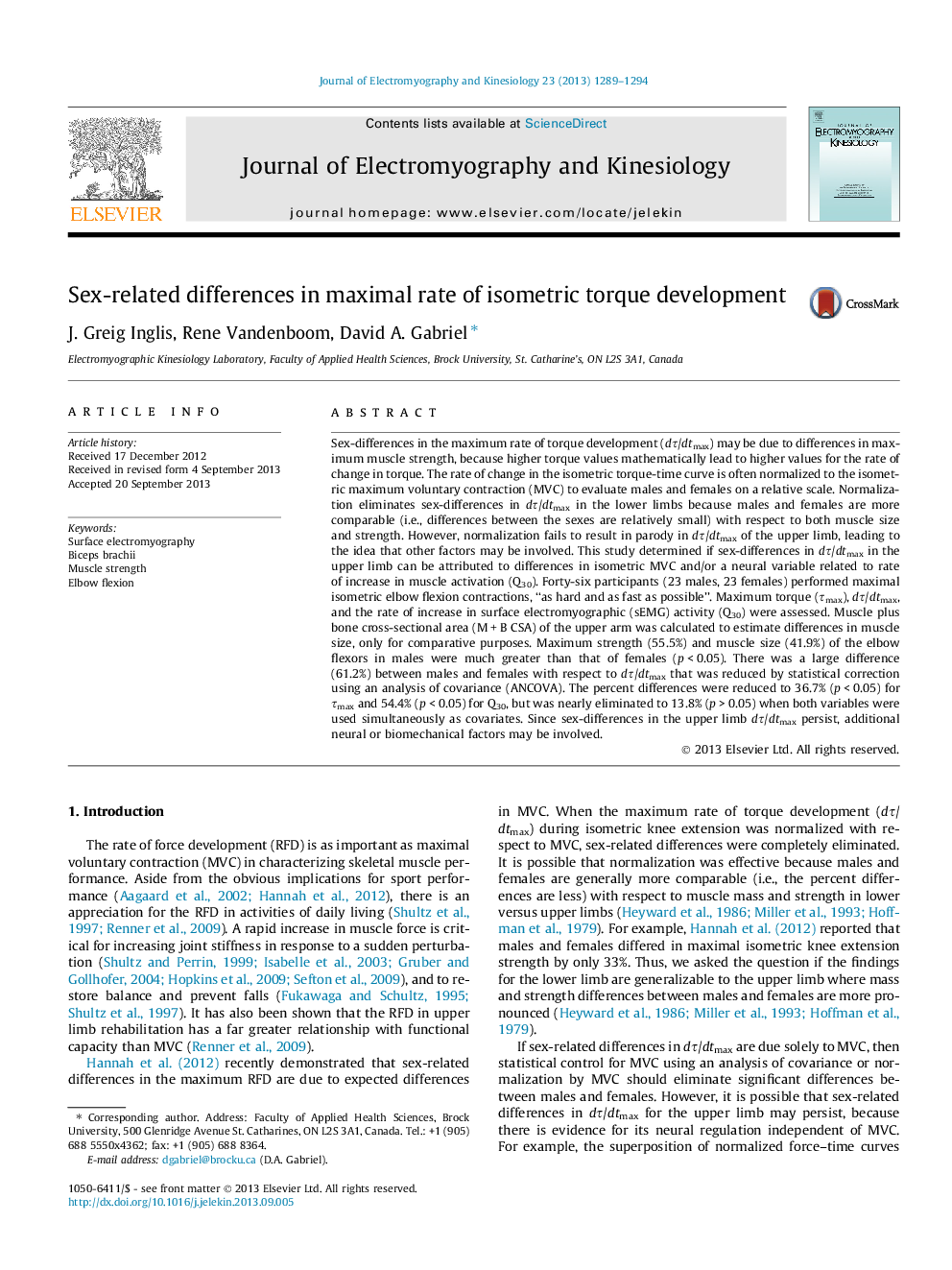| کد مقاله | کد نشریه | سال انتشار | مقاله انگلیسی | نسخه تمام متن |
|---|---|---|---|---|
| 4064803 | 1266226 | 2013 | 6 صفحه PDF | دانلود رایگان |

Sex-differences in the maximum rate of torque development (dτ/dtmax) may be due to differences in maximum muscle strength, because higher torque values mathematically lead to higher values for the rate of change in torque. The rate of change in the isometric torque-time curve is often normalized to the isometric maximum voluntary contraction (MVC) to evaluate males and females on a relative scale. Normalization eliminates sex-differences in dτ/dtmax in the lower limbs because males and females are more comparable (i.e., differences between the sexes are relatively small) with respect to both muscle size and strength. However, normalization fails to result in parody in dτ/dtmax of the upper limb, leading to the idea that other factors may be involved. This study determined if sex-differences in dτ/dtmax in the upper limb can be attributed to differences in isometric MVC and/or a neural variable related to rate of increase in muscle activation (Q30). Forty-six participants (23 males, 23 females) performed maximal isometric elbow flexion contractions, “as hard and as fast as possible”. Maximum torque (τmax), dτ/dtmax, and the rate of increase in surface electromyographic (sEMG) activity (Q30) were assessed. Muscle plus bone cross-sectional area (M + B CSA) of the upper arm was calculated to estimate differences in muscle size, only for comparative purposes. Maximum strength (55.5%) and muscle size (41.9%) of the elbow flexors in males were much greater than that of females (p < 0.05). There was a large difference (61.2%) between males and females with respect to dτ/dtmax that was reduced by statistical correction using an analysis of covariance (ANCOVA). The percent differences were reduced to 36.7% (p < 0.05) for τmax and 54.4% (p < 0.05) for Q30, but was nearly eliminated to 13.8% (p > 0.05) when both variables were used simultaneously as covariates. Since sex-differences in the upper limb dτ/dtmax persist, additional neural or biomechanical factors may be involved.
Journal: Journal of Electromyography and Kinesiology - Volume 23, Issue 6, December 2013, Pages 1289–1294